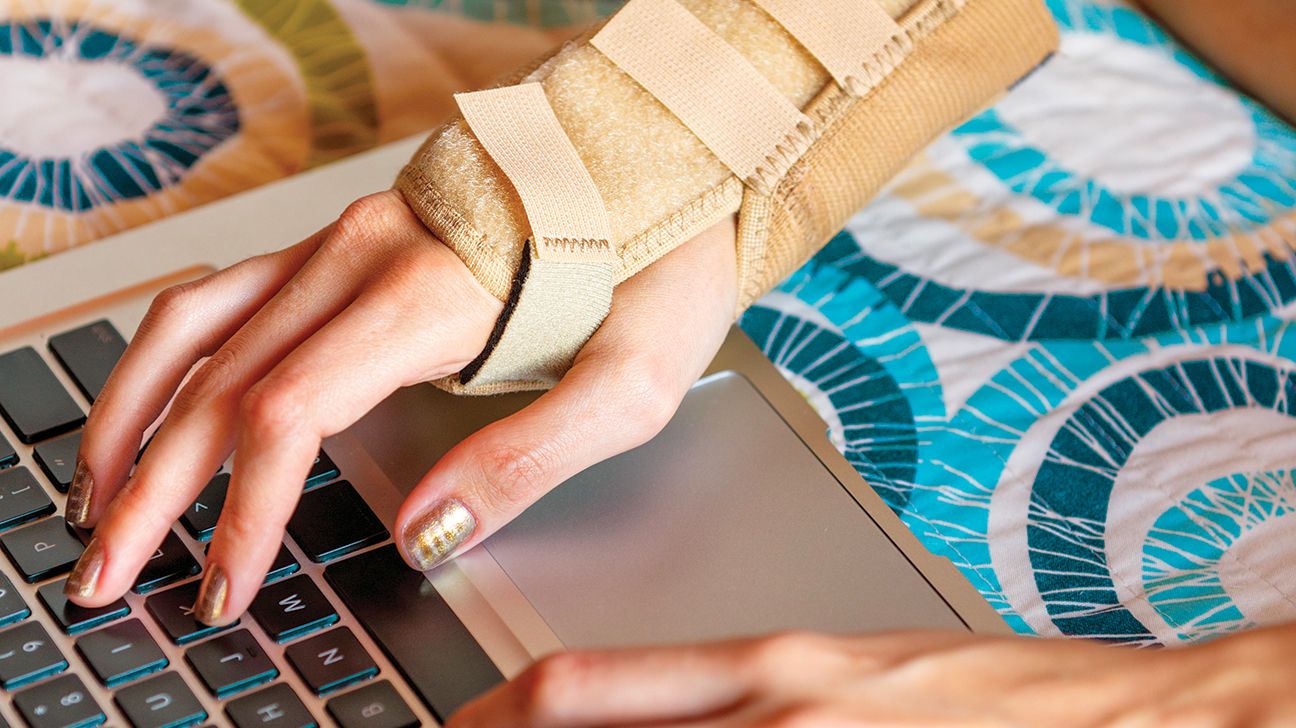It‘s possible to return to light activity soon after carpel tunnel surgery. Following restrictions like not lifting heavy objects and avoiding repetitive hand use can help you heal properly.

Carpel tunnel syndrome (CTS) can happen when there’s ongoing pressure on a nerve in your wrist. This can lead to numbness, tingling, burning, and pain.
You may require surgery if you’ve had severe symptoms for a long time. The surgical procedure to treat CTS is called carpel tunnel release. It can be open surgery or endoscopic, and it involves cutting the carpal ligament.
While carpel tunnel release can relieve CTS symptoms, following certain restrictions after surgery is essential to ensure proper healing.
Most people can do light activities with their hands soon after carpel tunnel surgery. A doctor can give you individualized advice on which activities to avoid. These can
In general, it’s best to avoid:
- lifting heavy objects
- gripping with force, such as when squeezing recovery balls
- walking with your hand dangling or sitting with your hand in your lap
- using your hand in a repetitive way
- hyperextending your wrist
- getting the stitches wet
- doing any activity that causes significant discomfort
You should also avoid keeping your fingers still. It’s a good idea to start moving your fingers as soon as possible after the procedure, as this helps keep swelling down and reduces stiffness. This type of movement can usually start immediately after surgery.
After the surgery, you can take a few steps at home to help reduce discomfort and allow your wrist and hand to heal.
This could include:
- Keeping your hand elevated: A sling or wrap can help you secure your hand upright around your chest.
- Keeping the dressing dry: Wearing a large glove or plastic bag over your hand while bathing can prevent water from getting into the dressing or stitches.
- Using your hand for daily activities: Moving your fingers for light activities can help with rehabilitation. When possible, try gently using your hand to get dressed, eat, and brush your hair.
- Wearing a splint or wrist brace: A doctor might recommend a splint or brace for several weeks after surgery. This can provide extra support to the wrist and may help prevent overexertion.
- Taking over-the-counter (OTC) pain relievers: Carpel tunnel release surgery usually causes only minor pain. You can take OTC pain medications like acetaminophen (Tylenol) or ibuprofen (Advil) to help manage symptoms.
- Massaging the scar: You can typically start doing this after the stitches come out, but it’s important to follow the timeline laid out by the doctor. Massaging the area can help prevent the skin around the scar from becoming tight.
During your first post-operative visit, a doctor can advise you on when it will be safe to remove your dressing.
Several exercises can help with recovery after carpal tunnel release.
But it’s a good idea to ask a doctor or physical therapist before starting any of these exercises after surgery. Starting an exercise program too soon might interrupt healing.
Some exercises to consider when you’re ready include:
- Finger bends: Bend each finger and hold the position for 5 seconds.
- Thumb Opposition: Touch your thumb tip to the end of each finger on the same hand, beginning with your index finger and moving to your pinky.
- Wrist extension: Hold your hand out flat with your fingers together. Bend upward at the wrist and hold for 5 seconds. Bend the wrist down and hold for another 5 seconds.
Repeat each exercise 10 times.
You may experience symptoms such as palm soreness for up to several months after carpel tunnel release surgery. However, recovery timelines can differ for each individual.
The American Academy of Orthopaedic Surgeons suggests the following recovery timelines:
- Your grip and pinch strength may take 2 to 3 months to improve after surgery, but it can be as long as 6 to 12 months if you have severe CTS. In some cases, grip and pinch strength might never completely recover to what they were before the condition’s onset.
- Numbness and tingling can subside right away for some people, but it usually takes several months to improve. Some people never completely regain full sensation in the hand and fingers.
Some people may also notice an increase in pain (rebound pain) for a few weeks after the release as the nerve adapts.
Recovery can be slower if you had a severe case of CTS. If you have arthritis or tendonitis of the hand, it can also result in a slower recovery from carpel tunnel release surgery.
After surgery, a healthcare professional will advise you on how to care for your stitches before they dissolve or are removed. They can inform you of any specific signs you should seek medical support for, such as infection in the wound.
If you are in significant pain or have continued weakness after the surgery, it’s important to speak with a doctor. This is because, very rarely, the median nerve can be damaged.
How to sleep after carpal tunnel surgery?
After carpal tunnel surgery, it can be beneficial to prop up your hand with a cushion when sleeping. This can help reduce swelling.
When can you resume driving after carpal tunnel surgery?
After carpal tunnel surgery, it is typically recommended to wait up to
Is it OK to move your fingers after carpal tunnel surgery?
Moving your fingers after carpal tunnel surgery is encouraged, as it can help to prevent stiffness. However, it is advised to only move the fingers when doing light activities, such as brushing your hair or getting dressed.
During the first few months after carpal tunnel release surgery, it can be helpful to avoid activities that require heavy lifting and strong gripping. This can allow your hand and wrist to heal properly.
In the early days, it is also suggested to keep the hand elevated and the fingers moving to reduce swelling and stiffness.
